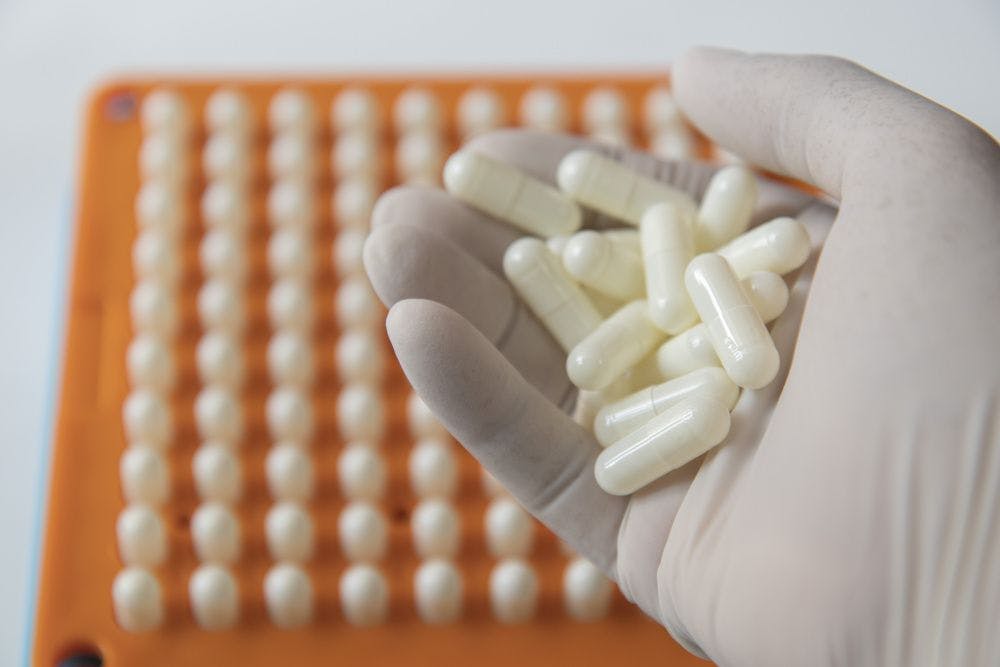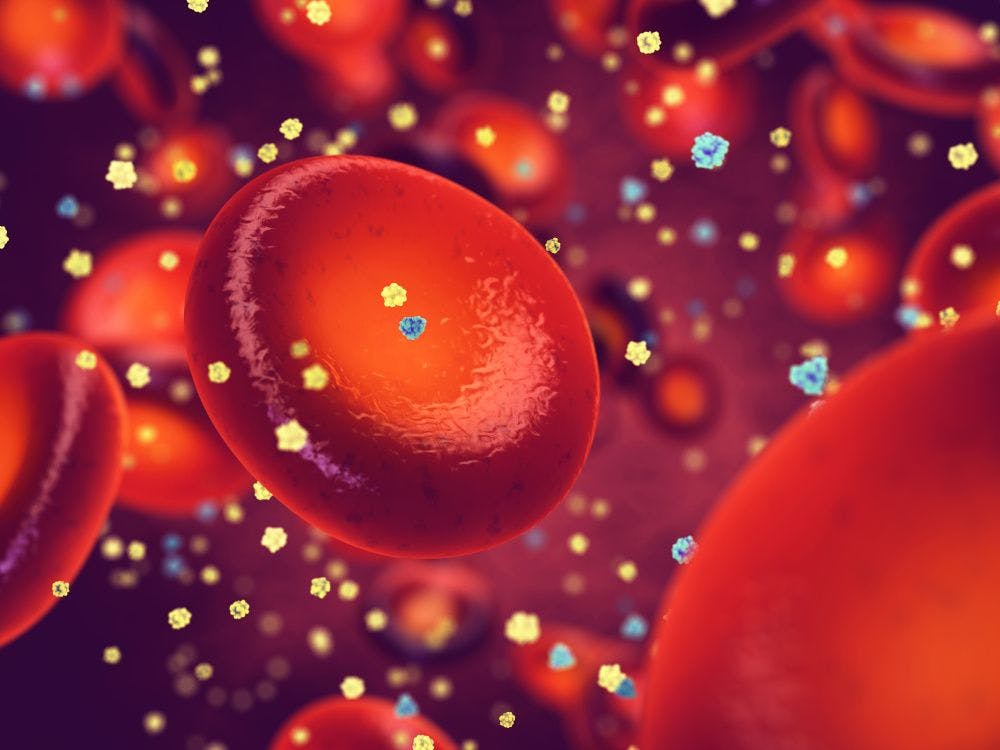COVID-19 plus legal uncertainty slowed CBD sales in 2020. What’s CBD in for in 2021? 2021 Ingredient trends to watch for food, drinks, and dietary supplements
The COVID-19 pandemic plus an unclear legal future slowed CBD sales in 2020. Will CBD's prospects improve in 2021?
PHOTO © NAKIGITSUNE-SAMA - STOCK.ADOBE.COM

The COVID-19 pandemic upended many CPG categories in 2020 as consumers shifted purchasing priorities. In the dietary supplements industry, growth skyrocketed for some products, like those for immune health, while others saw slippage. Cannabidiol (CBD), the hemp superstar, was one of the ingredients to suffer lower-than-expected sales in 2020.
“CBD category sales were certainly impacted by the COVID-19 pandemic. Between decreased in-store shopping, the shift of consumer spending to essential items, and the spike in online shopping, CBD sales in the natural products industry did not fare well,” says Jesse Karagianes, senior vice president, revenue growth, for CV Sciences (San Diego).
BDSA (Boulder, CO), a leading market research provider for the global cannabinoid industry, reports similar impacts. The data firm clarifies that while CBD sales did grow last year, growth wasn’t as high as had been expected prior to the pandemic. Note: BDSA specifies that U.S. CBD sales come from multiple channels: 1) the regulated cannabis market (sold through dispensaries), 2) general retail (hemp CBD that can be sold in general stores or e-commerce), and 3) pharmaceuticals.
“In 2020, BDSA projects that the total U.S. CBD market did grow substantially, but not to the extent that was originally expected,” says Kelly Nielsen, vice president, insights and analytics, BDSA. Prior to the pandemic, BDSA had been projecting 70% growth for the U.S. CBD market compared to the year prior, but by the end of 2020, growth was more at 55%-60%, ending at around $4.3 billion, she says.
“The reason for this change was on account of COVID-19, which caused disruption to consumer behavior rather than a big reduction in demand for CBD,” Nielsen says. “This was a function of store closures in many dispensaries and other CBD general retailers.”
Many believe the sales decline had as much to do with the fact that FDA has not legalized CBD for dietary supplements, foods, or beverages. FDA’s failure to legitimize this ingredient erodes consumer confidence in CBD and ultimately did just as much to hurt CBD sales as the pandemic did, sources say.
“CBD sales growth in 2020 was limited by the FDA failing to approve ingestible CBD products—foods and beverages in particular—and sending mixed messages about the legality of hemp-derived dietary supplements,” says Marielle Weintraub, PhD, president of U.S. Hemp Authority. “This decline was further exacerbated by pandemic-related store closures and what appeared to be consumers ‘hoarding cash.’” Weintraub, who also serves as director of scientific research and development for supplements brand Zilis, quotes Zilis’s director of finance, Jason Leach, who says the U.S. savings rate reached record levels in 2020—meaning more consumers were holding onto their money rather than spending it on items such as CBD. For instance, the U.S. savings rate was 33% in April 2020; previously, the highest level reached had been 17% in May 1975.
Daniel Fabricant, PhD, executive director and CEO of the Natural Products Association (Washington, DC), says the longer FDA takes to legalize CBD in supplements or to set a safe usage level for CBD, the greater the likelihood the public will lose faith in the ingredient.
“The regulatory uncertainty has unfortunately had a negative influence on consumer confidence,” he says. “The longer that we don’t get FDA in the game saying, ‘Here’s what we know. Here’s what we don’t know,’ I think that hurts more than anything. I’m not saying the pandemic didn’t contribute [to declining sales in 2020]…I think some of that happened, but I still think a lot of it was due to the uncertainty from FDA. In 2021, I hope that changes.”
FDA should act given the number of people taking CBD, he adds. “The reality is that probably between 50 million and 70 million people used a CBD product in 2019. That’s FDA’s responsibility. That’s really where they ought to go, ‘Hey, there are a lot of people being exposed to these products. What is it we can tell them so they know what they should look for in the marketplace?’ That’s really got to be front and center. And until it is, I worry that it’s going to be more of the status quo….The longer it just kind of hangs out in this gray area, this problem will continue.”
Duffy MacKay, ND, senior vice president, scientific and regulatory affairs for CV Sciences, agrees. “Full FDA regulation of the CBD category is key to eliminating bad actors and providing consumers with access to safe products that contain what is listed on their labels. The FDA needs to expressly determine if CBD can be added to food, dietary supplements, cosmetics, and pet products. We recognize that FDA has limited resources to enforce regulations, but people underestimate the far-reaching impact that clear FDA regulations will have on all CBD stakeholders such as responsible manufacturers, retailers, financial institutions, and beyond.”
He adds: “Responsible retailers, including online retailers, have too much on the line to do business with non-compliant companies. Once there are clear FDA regulations in place, the bulk of the industry will self-correct to be in line with regulations. Currently, retailers do not have a clear roadmap to determine what products are safe and acceptable to sell.”
FDA also needs to establish a safe usage level for CBD, says Fabricant. “Safety has got to be the key. If it’s not, we failed the consumer,” he says.
David Trosin, managing director, health sciences certification, at NSF International (Ann Arbor, MI), calls out a “complete lack of appropriate safety assessments on this ingredient to understand what is safe for either short-term or long-term consumption. It would be good if we could do the appropriate work to know what is safe before we flood the market with products....[T]here is a need for good scientific work to be done to understand what is actually safe.”
Industry associations and groups are hopeful more regulatory movement on CBD will happen at the federal level in 2021. (Click here to read what industry leaders think could develop on the regulatory front, including with CBD.)
But with no immediate FDA fix on the horizon, responsible members of the CBD industry stress the need to clean up the current marketplace and rid it of bad actors and poor-quality products in order to protect consumer safety and the longevity of the CBD market itself. As 2020 showed, sales can be vulnerable, and the need to maintain consumer trust in CBD is critical.
“In order for the CBD category to thrive long-term, cleaning up bad actors and improving the manufacturing and labeling of CBD products is crucial and urgent,” says Karagianes. “Despite COVID-19, the single largest factor which contributed to slow category sales was the deluge of inferior products hitting the market. From unfounded and unlawful health claims to inconsistency in CBD content, many CBD products do not deliver on what customers expect from them. Bad first impressions can result in potential CBD supporters leaving the category altogether.”
The ongoing problem facing CBD has been the same from the start: the market is filled with new-to-market companies who don’t understand supplement and food regulations and who fail to comply with best practices.
“The CBD industry has been flooded with start-up companies attracted to the explosion in interest in CBD,” says MacKay. “Many of these companies have no experience with the extensive USDA, FDA, and FTC regulations that govern sourcing, manufacturing, labeling, marketing, and post-market surveillance. These regulations are in place to protect consumers and ensure consumers have safe access to safe products. When ‘bad actors’ ignore regulations, they diminish the reputation of the industry, and worst of all, they put consumers at risk with poorly made products.”
In an ideal world, the opposite would be true, Weintraub says: “Until we truly understand how FDA plans on regulating in-process and finished goods in the hemp/CBD space to ensure the production of high-quality products, companies should act as if FDA were already officially overseeing the products. Following current Good Manufacturing Practices (GMPs) as dictated by the type of product you are producing (food, dietary supplement, cosmetic, etc.), in addition to understanding the individual measures needed to control the risks associated with your products, is the safest way to ensure a high-quality product is being produced.”
MacKay is blunt: “If companies cannot manufacture products according to GMPs, then they should not be in the CBD business.”
The task of cleaning up the CBD market is so daunting that one can’t be blamed for feeling hopeless at times. Those inclined to look for a silver lining might take comfort in the fact that perhaps not all “bad actors” are intentionally skirting GMPs; it’s possible some new-to-market companies simply don’t know better. These are the companies that could benefit from the guidance of consultants who could help them get compliant, MacKay says.
Trosin likewise says, “There are readily available training and education, quality standards, consultants, trade groups, and experts that are ready and eager to work with companies to help them comply. But companies have to want to comply. It is far easier for a company to think because they have faith in their quality, this is enough. I prefer the trust-but-verify approach.”
Third-party certifications play an important role here. For instance, the U.S. Hemp Authority Certification Program has had success helping both consumers and retailers identify responsible brands. The goal is to demonstrate that there are CBD brands on the market who are doing it right and to cut through the noise of subpar products. As Weintraub says, “The U.S. Hemp Authority Certification Program was developed out of necessity for fear that a company would create a product that led to what we call a ‘60 Minutes moment’ and do something so egregious the entire industry wouldn’t be allowed to exist before we had a chance to show the world what these plants and products are really capable of.”
She continues: “Third-party certification becomes the major tool for bringing credible assessment and assurance to the market. Certification to a standard, such as the U.S. Hemp Authority’s—one that has industry buy-in from a full range of stakeholders and who have collectively arrived at an achievable, meaningful level of performance—is a way to have consistent, impartial, technical, and competent evaluation of production practices, processing and handling, operations, product quality, and truth in labeling. It’s under these circumstances that consumers, government agencies, and others can have confidence in the integrity and value of the products in question.”
And while much of the conversation about how the CBD market needs improvement usually falls to two topics—FDA and bad actors—some major shifts in thinking may also be needed within industry in terms of what’s prioritized when it comes to CBD.
In general, more companies need to focus on investing in the science behind CBD, says Fabricant. “Everyone invests in their marketing. How much is any given company investing in the science?” he asks. “What are they putting back in the science on hemp and CBD? Because that’s really what drives the conversation…How much have we put back into what we want to say about the product and what we want to show consumers the product does?” In short, more research is needed to demonstrate to shoppers why they should buy this product. Fabricant also suggests more companies could work together to partner on research with the greater good in mind.
Trosin says there could also be improvement in the way industry views regulations for CBD. “I’ve never seen an ingredient approached in the way we are approaching CBD,” he says. “Take any other ingredient—let’s say vitamin E. We would never say, ‘Let’s set a vitamin E finished-product quality standard based on the feedback of the brands and industry.’ We would ask if the vitamin E is going into a supplement, a cosmetic, or some other type of product and then set the quality requirements based on what is required for the category by regulators, industry best practices, and accredited standards.”
He continues: “With CBD, the industry is looking for a quality approach specific to the ingredient as a whole that can be applied across numerous product categories. It is a backwards approach that opens the door to numerous quality concerns. We have seen a great variance in what is required and how it is being enforced.”
BDSA’s Nielsen also points out that, by nature, the messiness in the CBD market serves only to confuse the customer more. “One of the challenges with CBD—and cannabinoids in general—is there is room for confusion about the product and its nuanced benefits. This is compounded in that FDA regulation means manufacturers have their hands tied on how they can talk about the benefits of the products. Meanwhile, a key to product, or category, longevity is ensuring that a product can deliver on consumer expectations. Risk emerges if consumers are unable to understand the efficacy of the products in the category because of a wide range of confusing differences, such as if the product matches what is in the bottle, confusion about dosage or ingredients, etc. If specific organizations are undermining rules and regulations, it can create a negative in-going experience for consumers entering the category. They may be dissatisfied with products they try and turn away.”
If the CBD market doesn’t get a handle on improving overall product quality, the initial consumer interest in CBD will not last long, Trosin says. He notes that NSF did see CBD activity decline last year. “As a business service, we definitely saw a slowing down during 2020. I think there was initial market excitement about an exciting new ingredient that promised to address so many health concerns. There were new brands entering the market as fast as you could count them and being sold at numerous retail locations, many of which were very untraditional. Much of this was done to chase the promise of all the growth and new wealth. But consumers will only spend $90 a month on a product, in hopes of a miracle, for so long before they lose interest. Add to this a pandemic that negatively impacted many personal incomes, and people were forced to make decisions between essentials and luxuries.”
People won’t spend their money on CBD unless they feel it’s worth it. The CBD industry is at risk of losing customers unless changes happen quickly both within the industry and among regulators. Improvements are needed now.
“It’s incredibly urgent,” says Weintraub. “Although there have been no adverse events reported from CBD, there is an abundance of products on the market that are not properly tested for possible contaminants (e.g., heavy metals, pesticides, etc.). Most likely there are still products being produced in garages, barns, basements, and there are products that don’t contain what is represented on the label.”
Trosin adds: “From an urgency standpoint, I would say it is highly urgent. The longer it goes without being addressed, the more difficult it will be to bring brands into compliance.”
On a more positive note, Weintraub says, “The brands that will survive will take the steps to build trust with their consumers, ensure they are following the regulations and processes needed to manufacture safe finished products, and go above and beyond to prove to the market that their products can be trusted.”
Meanwhile, the hope is that CBD sales will start to improve as the COVID-19 pandemic eases and economic conditions recover. Many feel optimistic that CBD sales will pick up again this year.
“We do project an increase in CBD category sales in 2021, with the largest percentage increase anticipated in Q3 once the pandemic is more under control,” Karagianes says.
Nielsen echoes that: “As we look ahead to 2021, BDSA projects continued growth for CBD. While we do not expect FDA approval until 2021 or 2022, we project total industry size in the U.S. to climb to $6.8 billion.”
Jason Leach at Zilis notes that the U.S. savings rate already seemed to decline in November 2020 to 13%—compared to 33% in April 2020—as consumers spent more freely compared to earlier in the year. He says saving rates “appear to be heading back to single-digit pre-pandemic levels.”
This could bode well for CBD, Weintraub says. “With this shift in consumer saving and rise of consumer spending, I believe we will see a strong return for CBD sales, as well as increased sales and interest in novel hemp-derived products such as those containing CBG (cannabigerol) and CBC (cannabichromene). Even greater growth will become evident following clarity from the FDA, and as I do not believe there will be any decline in consumer interest and focus on health and wellness products in the future, the hemp-derived product market is poised to continue to grow as we head into 2021.”
After all, CBD has a lot going for it as a health-benefit product. The industry just needs to prove that to the public—not just in 2021 but for the long haul.
2021 Ingredient Trends to Watch for Food, Drinks, and Dietary Supplements:
Vitamin C
Melatonin
Vitamin D
CBD
Elderberry
Mushrooms
Ashwagandha
Multivitamins
Protein
Probiotics

Prinova acquires Aplinova to further increase its footprint in Latin America
April 7th 2025Prinova has recently announced the acquisition of Brazilian ingredients distributor Aplinova, which is a provider of specialty ingredients for a range of market segments that include food, beverage, supplements, and personal care.

























